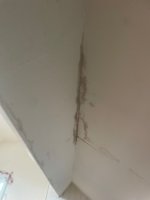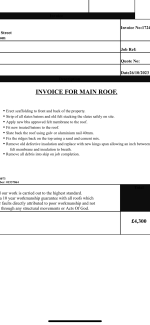Hi Everyone - new to this forum, I'm hoping somebody can help me with my problem.
Damp patches/water marks apeared last year in my loft conversion. My roofer took a peak under the tiles and the insulation was saturated. So he took the roof off and installed new breathable insulation.
Fast forward 6 months and the patches are back, See pics. The roof has no damage or leaks.
He is suggesting two options -
stain block then paint and see how he goes or redo the lot and use moisture resistant boards as it’s in the attic.
He says the the roof can't breathe - so i'm not too sure about his thoughts.
Don't we need more ventilation (ventalation vents) if so what would you suggest? And will everything need replastering?




Damp patches/water marks apeared last year in my loft conversion. My roofer took a peak under the tiles and the insulation was saturated. So he took the roof off and installed new breathable insulation.
Fast forward 6 months and the patches are back, See pics. The roof has no damage or leaks.
He is suggesting two options -
stain block then paint and see how he goes or redo the lot and use moisture resistant boards as it’s in the attic.
He says the the roof can't breathe - so i'm not too sure about his thoughts.
Don't we need more ventilation (ventalation vents) if so what would you suggest? And will everything need replastering?



